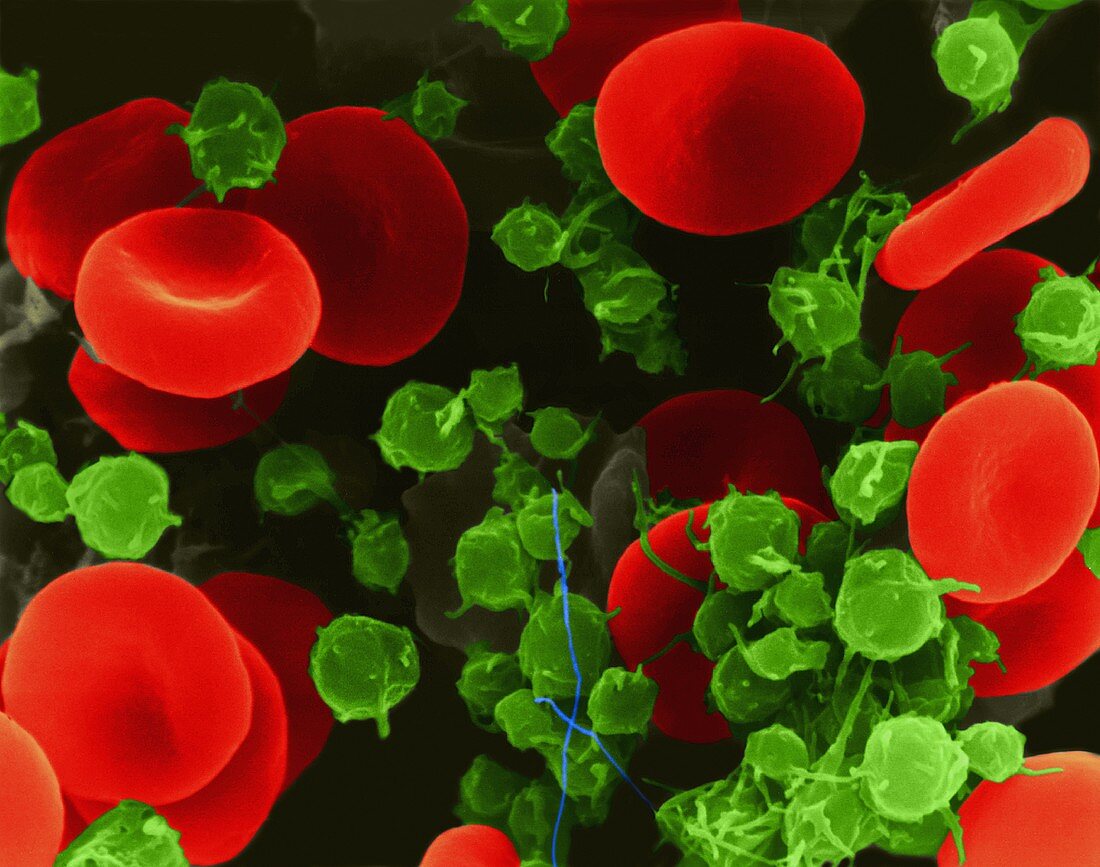Red blood cells and platelets, SEM
Bildnummer 12310237

| Human red blood cells and platelets, composite coloured scanning electron micrograph (SEM). Human red blood cells (RBCs), or erythrocytes, are involved in delivering oxygen to the body tissue. The cytoplasm of RBCs is rich in haemoglobin, an iron-containing biomolecule that can bind oxygen and is responsible for the red color of the cells. In humans, mature RBCs are flexible and oval biconcave disks. Platelets are blood cell fragments that play an essential role in blood clotting and wound repair. Platelets in the blood are small oval disks and are termed non-activated platelets or thrombocytes. They are the body's first line of defence against excessive blood loss. When an injury such as a cut is sustained, platelets (now known as activated platelets) change their shape, become sticky and build up on a vessel wall to form a plug. Magnification: x1, 245 when shortest axis printed at 25 millimetres. | |
| Lizenzart: | Lizenzfrei |
| Credit: | Science Photo Library / DENNIS KUNKEL MICROSCOPY |
| Modell-Rechte: | nicht erforderlich |
| Eigentums-Rechte: | nicht erforderlich |
| Restrictions: | - |
Preise für dieses Bild ab 29 €
Für digitale Nutzung (72 dpi)
ab 29 €
Für Druckauflösung (300 dpi)
ab 300 €
